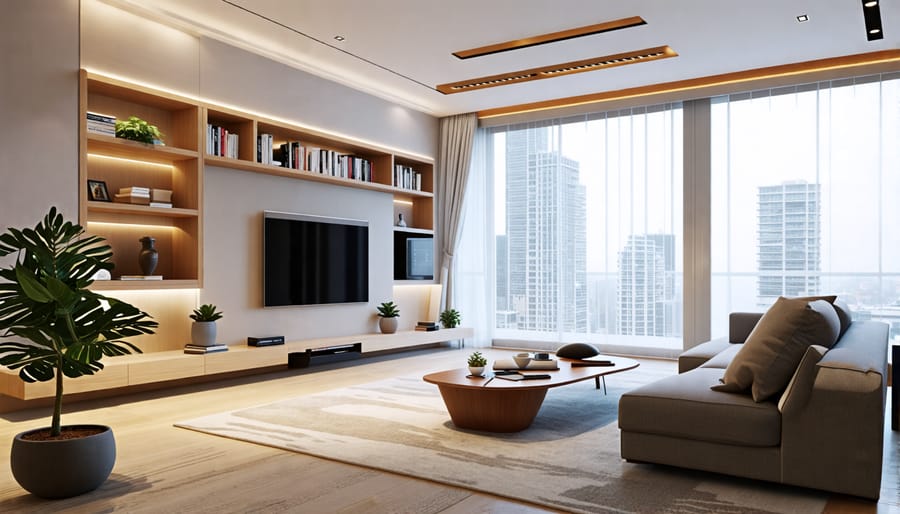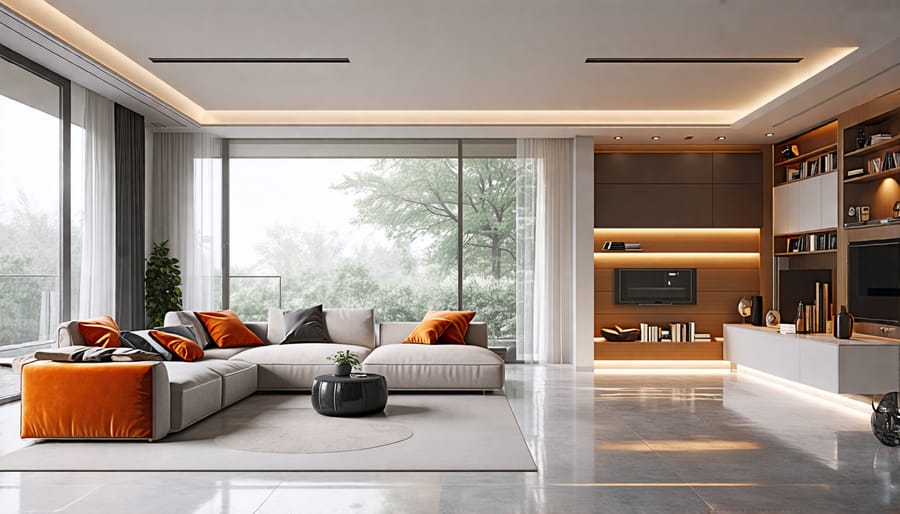
Revamp Your Home with Open Source Automation: Easy Solutions for Every Budget
Transform your living space by choosing open-source platforms that offer limitless customization. Install home automation systems that provide flexibility, allowing you to tailor features according to your specific needs. Leverage smart devices to seamlessly blend technology with your home decor, enhancing both functionality and style. Utilize comprehensive online communities and resources for detailed DIY project guides, simplifying the implementation process for any skill level. Embrace the freedom to innovate without being tied to expensive proprietary systems, ensuring your home is not only intelligent but also reflects your unique taste.
The Benefits of Open Source Home Automation

Customization Opportunities
Open source solutions for home automation provide a world of customization opportunities that cater to your unique lifestyle and preferences. With these platforms, you can tailor your smart home system to perform specific tasks that enhance comfort and efficiency. Imagine automating your lighting to match your daily routine or setting up custom notifications for security alerts. The beauty of open source lies in its flexibility, allowing DIY enthusiasts to integrate new devices seamlessly or tweak existing setups effortlessly. Plus, you can personalize the aesthetic integration of technology, ensuring your home remains stylish while being smart. Dive into DIY projects that transform your living space with creativity and practicality, making your home truly yours.
Affordability and Cost Savings
Embracing open source home automation can significantly reduce costs compared to proprietary systems. By leveraging community-driven solutions, homeowners can save on pricey licensing fees while enjoying the flexibility to customize setups according to personal preferences. Open source platforms offer a variety of plugins and widgets that are often free or available at minimal costs, allowing DIY enthusiasts to tailor smart home systems to their unique needs without breaking the bank. These systems are also frequently updated by a community of developers, ensuring you have access to cutting-edge technology without extra expense. This makes open source an appealing option for budget-conscious homeowners eager to integrate smart tech into their living spaces.
Community and Support
Connecting with the open source community offers access to a wealth of support and resources for home automation. Enthusiasts and experts alike share insights, troubleshoot issues, and offer customization tips. Whether you’re a DIY enthusiast or a homeowner eager to learn, you’ll find welcoming forums, detailed guides, and ongoing project inspiration to help bring your automated home to life.
DIY Project: Setting Up Open Source Home Automation
Selecting Your Platform
Choosing the right open source home automation platform is crucial for creating a smart, efficient living space that meets your unique needs. Start by identifying what aspects of your home you want to automate—whether it’s lighting, climate control, or security. Consider platforms that offer flexibility and ease of use, especially if you’re new to smart home technology. Look for solutions with strong community support, which can be invaluable for troubleshooting and inspiration. Finally, evaluate how well each platform can integrate with your current devices to ensure seamless operation throughout your home.
Preparing Your Equipment
To kickstart your home automation project, gathering the right equipment is essential. Begin by listing the devices you aim to automate, like lights, thermostats, or security cameras. You might consider starting small with a few key items and expanding as you become more comfortable with the setup. A critical component is a reliable Wi-Fi network; ensure your router can handle multiple connected devices. For the heart of your system, consider open-source platforms like Home Assistant or OpenHAB, which will run on a computer, Raspberry Pi, or similar.
Next, gather smart plugs, sensors, and controllers that are compatible with your chosen platform, ensuring they match your unique home’s needs. A smartphone or tablet will serve as your command center, allowing you to control and monitor devices from anywhere. Don’t forget the necessary cables and power adapters for connections. By preparing your equipment thoughtfully, you’re paving the way for a seamless, customizable home automation experience.
Installation and Configuration
Getting started with an open-source home automation platform is simpler than you might think! First, choose a platform that aligns with your needs—popular options include Home Assistant, OpenHAB, or Domoticz. Download the software from the platform’s official website. Most platforms offer many installation guides tailored to various systems, including Raspberry Pi, Windows, or Linux, making it easy to follow along regardless of your setup.
Once installed, it’s time to configure your system. Begin by connecting your smart devices like lights, thermostats, and security systems. Users often find it helpful to start with one type of device to get comfortable before adding more. Many platforms come with a user-friendly interface, allowing you to automate tasks with ease. For integration tips, consider how these devices can complement your décor seamlessly, like using automated lighting to accent key design features. With your setup complete, it’s all about fine-tuning and personalizing the experience to suit your home’s unique style. Remember, it’s a journey, and there are plenty of community resources to help along the way!

Integrating Technology into Your Interior Design

Discreet Installation Techniques
Transforming your home into a smart space with open source automation doesn’t mean sacrificing style. With a few creative adjustments, your tech can seamlessly blend with your decor, offering the benefits of a modern system without clunky, distracting devices. Start with multi-functional furniture, like coffee tables with built-in charging stations. You can also disguise speakers and routers using decorative boxes or repurpose vintage items, like a hollowed-out book, to tuck away smaller gadgets.
If you enjoy DIY projects, consider installing smart lighting systems behind artwork or beneath shelves for an ambient glow. For those who prefer minimal visual impact, in-wall or ceiling-mounted options can discreetly house cameras and smart switches, blending technology with your home’s design. Be sure to choose neutral or matching colors for devices that can’t be completely hidden to ensure they complement the existing color palette.
These simple tricks mean your open source home automation can be both functional and aesthetically pleasing, keeping your living space beautiful and uncluttered.
Design-Friendly Technology Options
In the world of home automation, blending technology with aesthetics is key to creating a harmonious living space. Open source devices bring not only functionality but also design flexibility, allowing you to choose technology that suits your style. Consider sleek smart switches and minimalistic sensors that seamlessly integrate with your walls or furniture, available in a variety of finishes to match your décor. For those who love DIY projects, customizing devices with personalized skins or 3D-printed casings can be an exciting option. Smart lighting systems can be artistically arranged to create mood-enhancing ambiances without overwhelming a room’s theme. Open source platforms often support such creative integrations, offering homeowners the chance to play with design without compromising on features. When selecting design-friendly devices, prioritize those that blend naturally into your space, creating a tech-friendly environment that doesn’t disrupt your home’s elegance.
Maintenance and Troubleshooting
Routine Maintenance Tips
Regular maintenance ensures your open source home automation system runs smoothly. Start by checking for software updates; these often enhance security and performance. Set a regular schedule to review and update your system, perhaps monthly. Dusting off your devices is essential—dust can affect sensors and connectivity. Consider surge protectors to safeguard against power spikes. Periodically test devices to confirm they respond correctly and replace batteries as needed. For DIY enthusiasts, back up your system configuration regularly to avoid data loss. Finally, keep your network secure with strong passwords and encryption protocols. A little care goes a long way in maintaining your smart home.
Common Issues and Solutions
Encountering hiccups with your open-source home automation system can be frustrating, but often there are straightforward solutions. If devices aren’t connecting, double-check that your Wi-Fi is functioning correctly since a stable network is crucial. Security updates are often overlooked, so ensure your system is up-to-date to prevent compatibility issues. Experiencing lag? Your hardware might need an upgrade; more powerful processors can improve performance. If integrating new tech with your setup seems daunting, don’t hesitate to explore online forums where fellow DIY enthusiasts offer practical advice. For blending automation with aesthetics, consider smart integrations that complement your decor, like in these home office ideas.
Conclusion
In conclusion, embracing open source home automation offers an exciting opportunity to personalize and enhance your living spaces without breaking the bank. We’ve explored the significant advantages of these systems: affordability, flexibility, and the ability to tailor solutions that perfectly suit your lifestyle and aesthetic. Whether you’re a DIY enthusiast eager to embark on a new project, a homeowner seeking to modernize your living space, or an interior designer looking to seamlessly integrate technology into your designs, open source platforms provide a versatile and dynamic avenue to do so.
Throughout our discussion, we’ve highlighted useful tips for integrating technology into home decor, ensuring that your smart home is not only functional but also stylish. By stepping into the world of open source home automation, you’re opening doors to endless possibilities and innovation. The communal nature of open source ensures continuous improvements and a vibrant exchange of ideas, empowering you to stay updated with the latest advancements and trends.
We encourage you to explore the vast resources available within the open source community, take advantage of DIY project guides, and experiment with new ideas. As you delve deeper, you’ll find countless ways to create a smart home that is truly a reflection of you.
